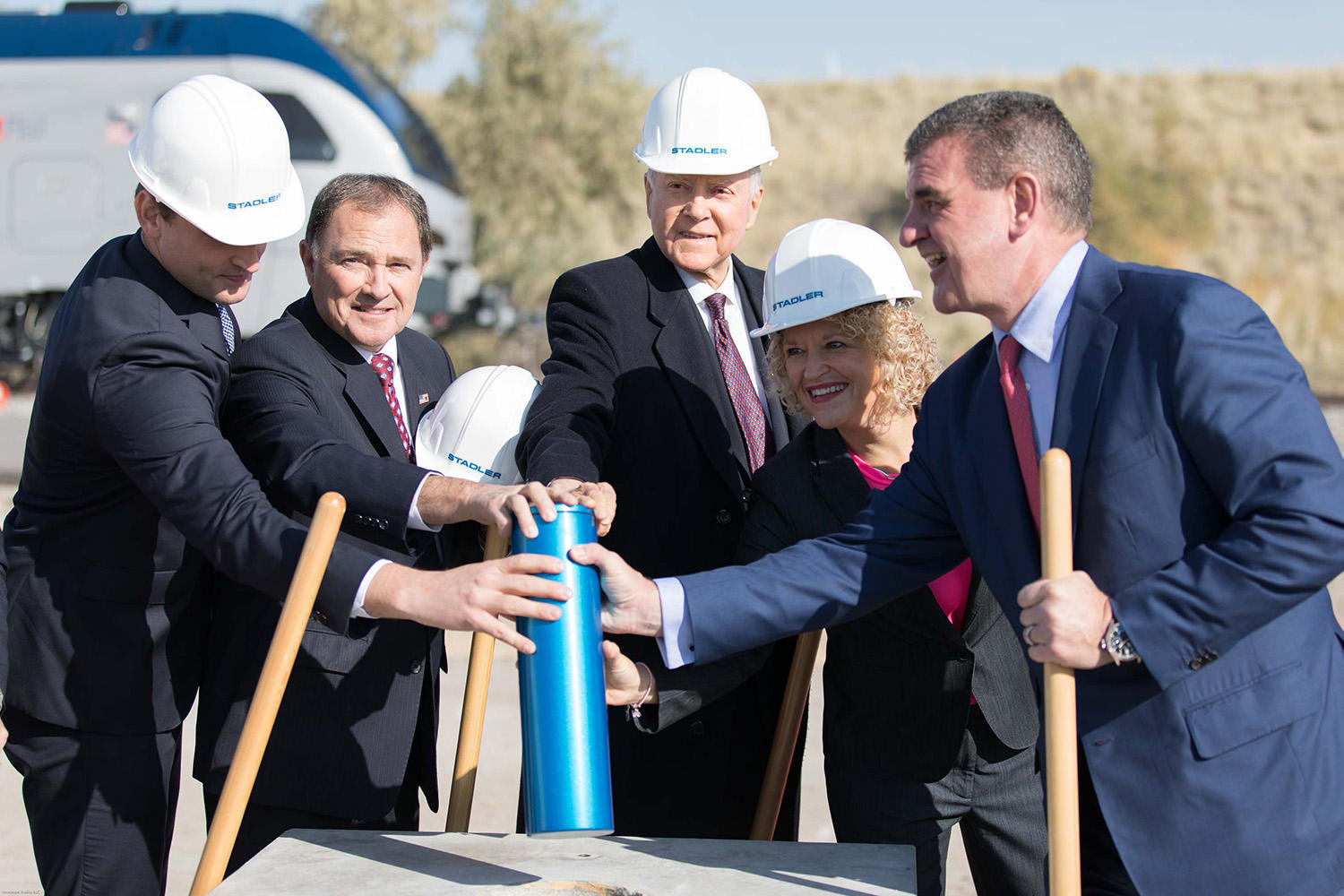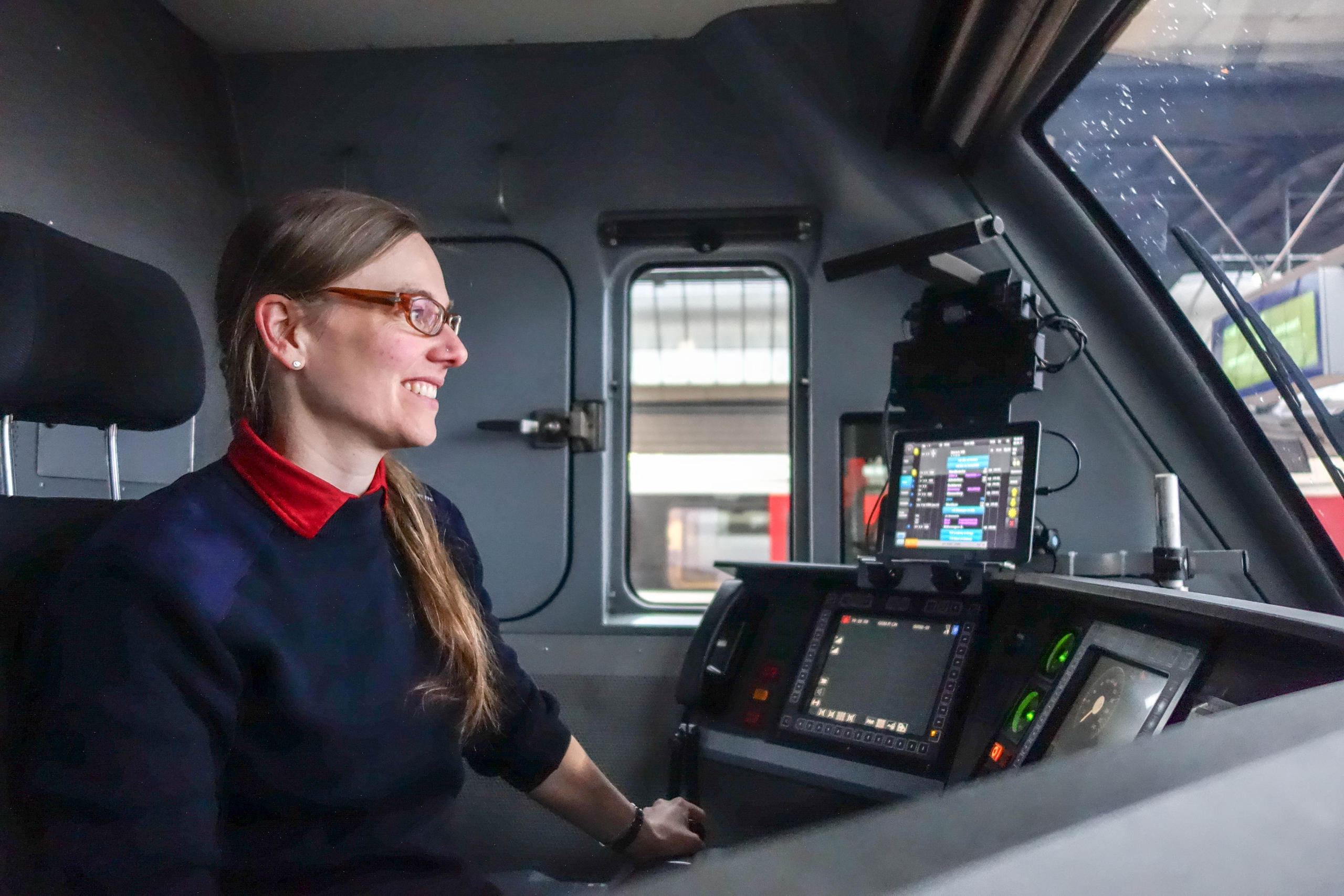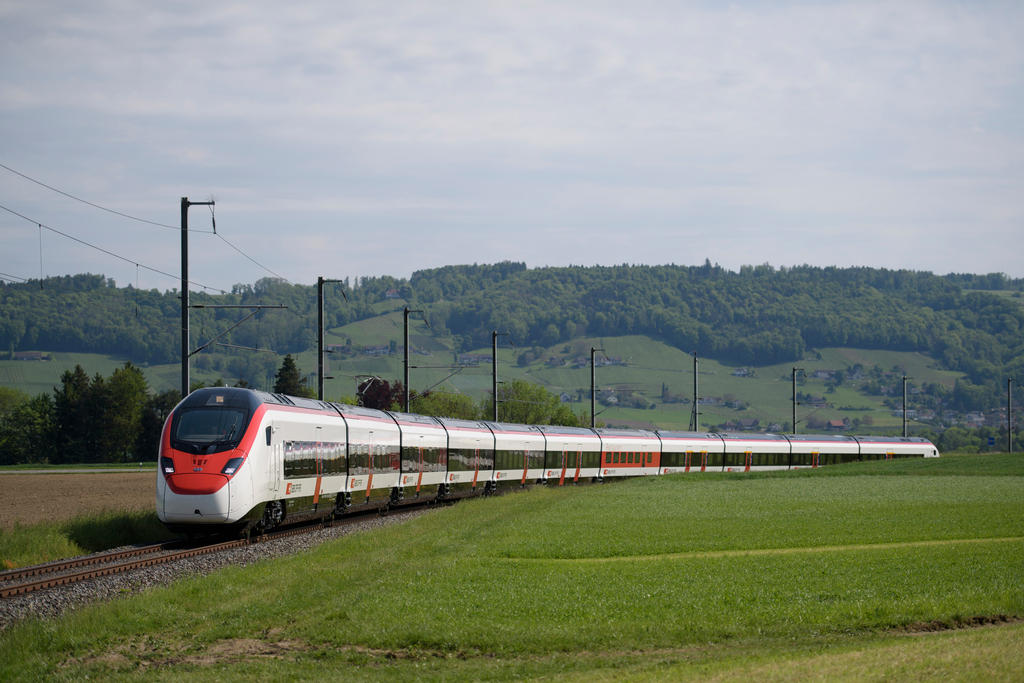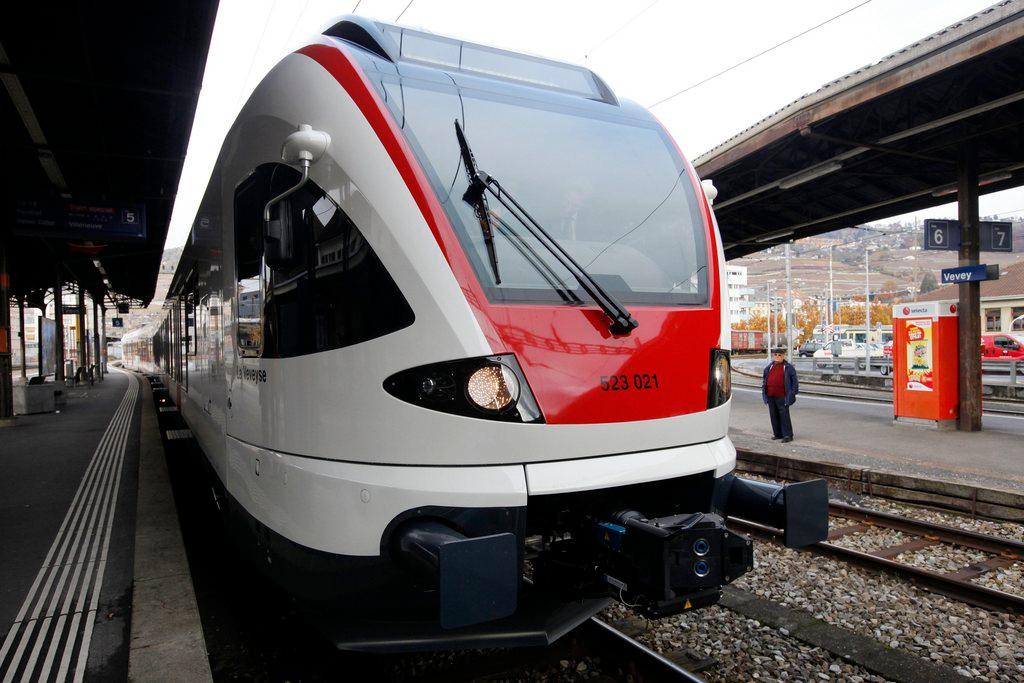Stadler Rail makes US inroads

After 15 years of doing business in the United States, Swiss railway vehicle manufacturer Stadler Rail is finally getting a foothold in the country. It has broken ground on a factory in Utah – a production site that could help take the company’s US operations to the next level.
After a dry and very hot summer, the new Stadler Rail factory site looks a little like a wasteland. But the builders will soon be arriving to start work on the $50 million (CHF49.9 million) project.
“It’s a great location,” says Stadler US CEO Martin Ritter, during a site visit.
Salt Lake City’s international airport and Interstate 80 are just a few minutes away. And crucially for a manufacturer of railway vehicles – also known as rolling stock – the site also has its own connection to the Pacific Union western rail line that links Denver to San Francisco.
Once operational, the factory will employ around 1,000 people. By building an American production facility, Stadler Rail will be able to access federal funding awarded for orders for the US market. Only products that are “Made in America”, or have a high level of local content, qualify.
The Buy America programme requires American transport companies to buy transport made primarily in the US. Since 2016, the cost of parts produced in the US must represent over 60% of the total costs of the parts in vehicles, and railway rolling stock in particular. This rate will rise to 65% in 2018 and 70% in 2019.
Exceptions are still possible when the application of these provisions would be “inconsistent with the public interest”, or when steel and iron materials are not produced in the US in sufficient and reasonably available quantities.
Foreign companies generally react to these requirements by transferring structural production and assembly to the US.
Fiscal advantages
Construction officially began on October 13, 2017. The number of prominent people present for the ground-breaking ceremony was indicative of the importance Utah authorities attach to this new factory: Utah Governor Gary Herbert and Salt Lake City Mayor Jackie Biskupski stood alongside Senator Orrin Hatch. Stadler Rail’s CEO Peter Spuhler was, naturally, also on hand.
The land previously belonged to the state’s influential Mormon Church. Amazon and FedEx are also moving into the area – further signs of its desirability to businesses.
“There is high demand for local rail transport in the US because the expansion of car-based urban areas has reached its limits.”
Stadler Rail looked at other locations, with Texas and Atlanta among the main contenders. But Utah’s tax incentives sealed the deal. If everything goes as planned, Stadler Rail will see a 25% return on $40 million in taxes that the company will bring to the region over the next 15 years.
“Utah is generally very amenable to business,” says Ritter, acknowledging that labour unions do not have a strong presence in the state.
Stadler Rail has been present in the US since 2002, but the new factory is tied to the eight FLIRT (Fast Light Innovative Regional Train) vehicles ordered in 2015 by Texan rail operator TexRail. To benefit from federal funding, Stadler had to find a production site in the US that conformed to the Buy America Act – a law that only permits subsidies for material produced in the country.
The company started production of the new trains at the start of the year at the former Pacific Union factories in Salt Lake City. But the site proved to be too small. There are 120 people currently working there, including staff from Switzerland and Stadler’s Polish operations.
“There is high demand for local rail transport in the US because the expansion of car-based urban areas has reached its limits.”
High demand
The new 2,750 square-metre factory is expected to be complete in mid-2018, and will have space for 350 staff at first, although that number is expected to grow to around 1,000, depending on whether new orders come in.
“There is high demand for local rail transport in the US because the expansion of car-based urban areas has reached its limits,” said Michael Allegra, a Utah advisor on rail and public transport.
Stadler Rail wants to take advantage of this development. The company has already secured a major order in California. In 2016, public transport firm Caltrain ordered 16 double-decker KISS-type trainsExternal link costing $551 million from Stadler. They will connect San Francisco with San Jose via Silicon Valley in 2020.
“It’s a major project with electronic trains, which in itself is attracting a lot of interest,” says Ritter. California is one of the most powerful economic regions in the world and an advocate for renewable energy. Stadler’s contract has a provision for a potential additional 96 cars.
The first double-decker train built in Utah for the American market is due to be delivered in August 2019 and will enter into service the following year if it passes the required tests.
“We are confident and hope to be able to bring the most modern technologies to the American railroad market,” said CEO Spuhler.
Stadler’s first US order dates back to 2002 for 20 articulated rail cars for the New Jersey Transit River Line. It was followed by an order from the Capital Metropolitan Transportation Authority in Texas for six diesel articulated rail cars that ran from the centre of Austin to Leander. The fleet was delivered in 2008 and another four vehicles were ordered in 2015. In 2012 Stadler delivered 11 diesel articulated rail cars to the Denton County Transportation Authority in Texas. In 2014 the San Francisco Bay Area Rapid Transit District (BART) ordered eight diesel articulated rail cars.
Translated from German by Jessica Dacey

In compliance with the JTI standards
More: SWI swissinfo.ch certified by the Journalism Trust Initiative



You can find an overview of ongoing debates with our journalists here. Please join us!
If you want to start a conversation about a topic raised in this article or want to report factual errors, email us at english@swissinfo.ch.